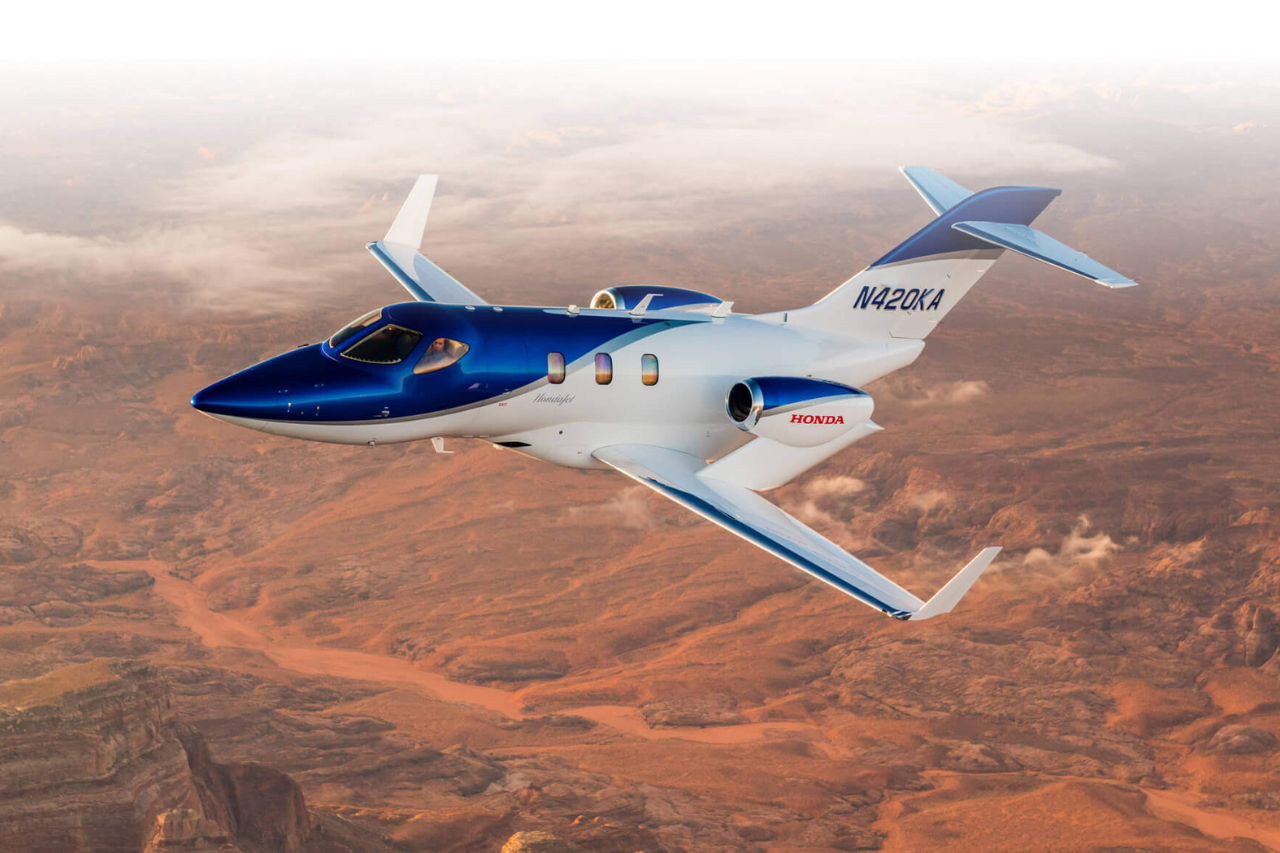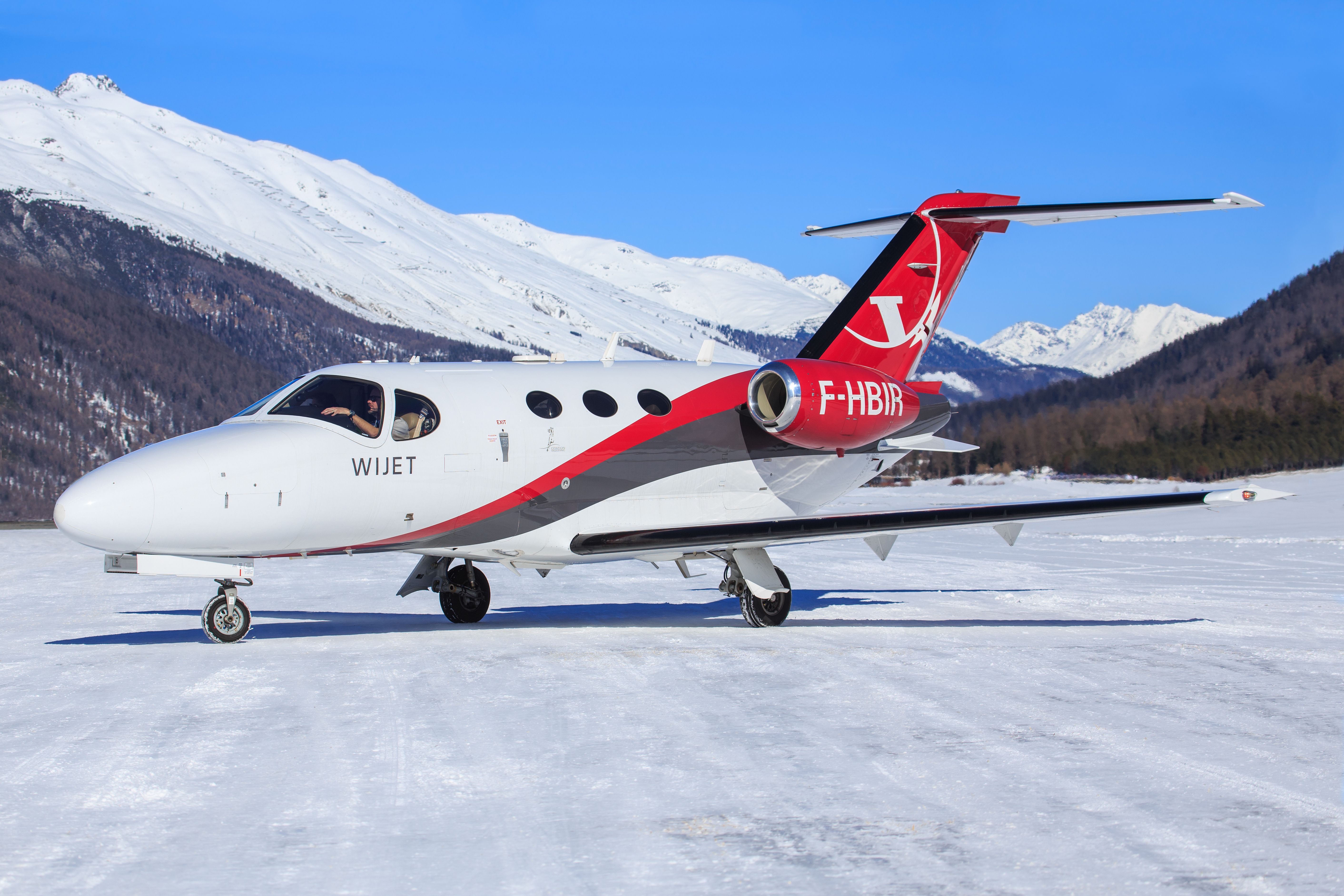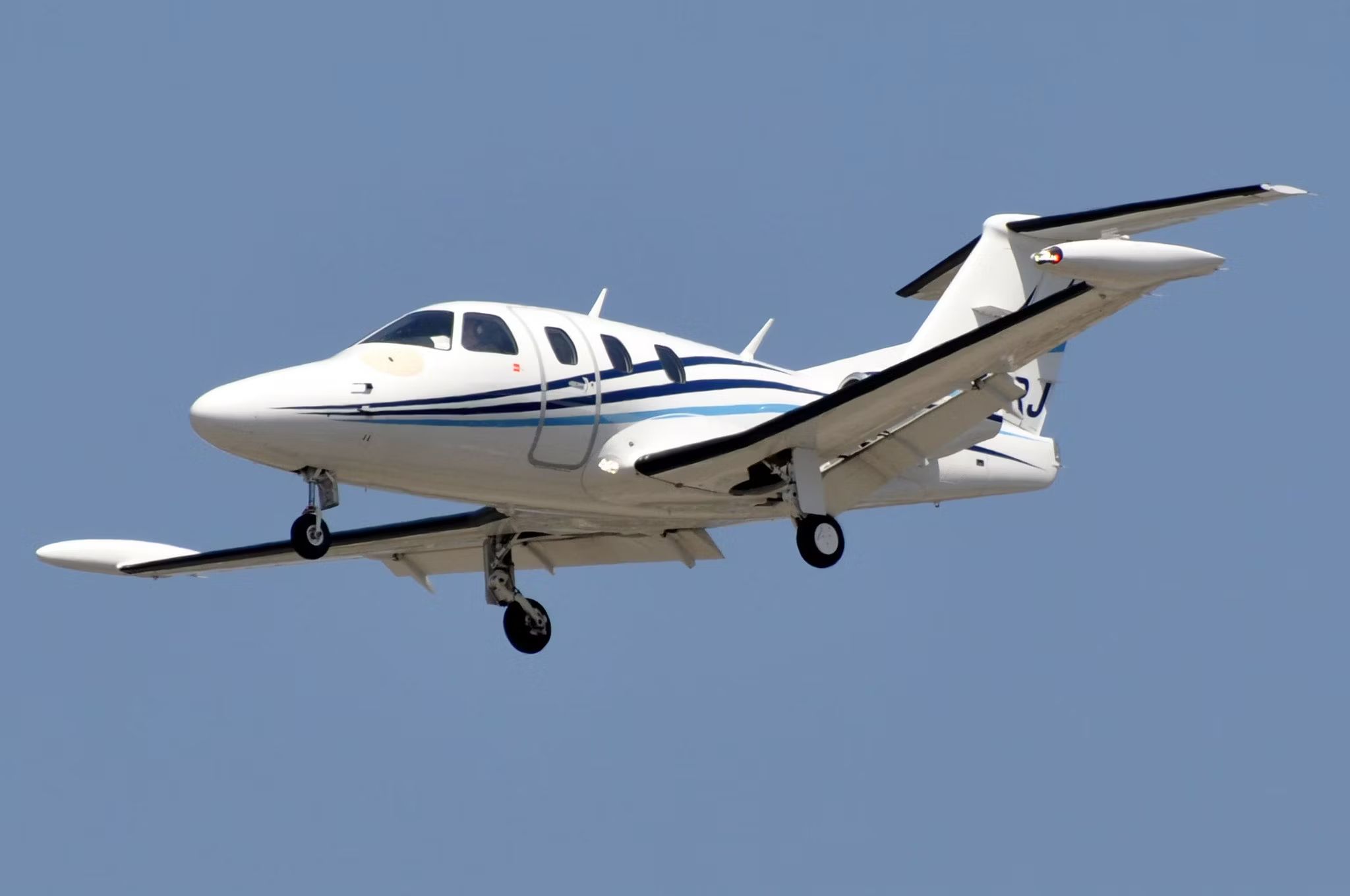Summary
- Embraer Phenom 100E ranks moderately inexpensive with an operating cost of $1,152 per hour.
- The HondaJet HA-420 is more affordable with an operating cost of $1,135 per hour.
- The Cirrus Vision SF50 is the most economical, costing $662 per hour to operate.
One of the major benefits of a light jet is its fuel efficiency, primarily due to its design weight. Light business jets usually accommodate 4–8 passengers and can fly ranges of approximately 1,200 NM. While these jets are fast in the air, they are some of the most economical in business aviation. Simple Flying compiled a list of light private jets with the lowest operating costs, as highlighted in the AOPA blog.
5 Embraer Phenom 100E
Hourly operating cost: $1,152
- Crew: 1-2 pilots
- Capacity: 4-5 passengers
- Length: 12.82 m (42 ft 1 in)
- Wingspan: 12.3 m (40 ft 4 in)
- Height: 4.35 m (14 ft 3 in)
- Max takeoff weight: 4,800 kg (10,582 lb)
- Maximum speed: 467 knots (537 mph, 859 km/h)
At the higher end of light jets with the lowest operating costs is the Embraer Phenom 100E, having an operating cost of $1,152 per hour. The Phenom 100E is powered by a pair of rear fuselage-mounted Pratt & Whitney Canada PW617F-E turbofan engines, each generating 1,730 lbf (7.7 kN) of takeoff thrust.
Photo: Embraer
The engines feature dual full authority digital engine controls (FADEC), enabling greater aircraft operational reliability. The condition-based fault-tolerance and maintenance aspects of the engine minimize operating costs. Moreover, the Phenom 100E airframe features approximately 20% composite materials, minimizing the aircraft’s empty weight.
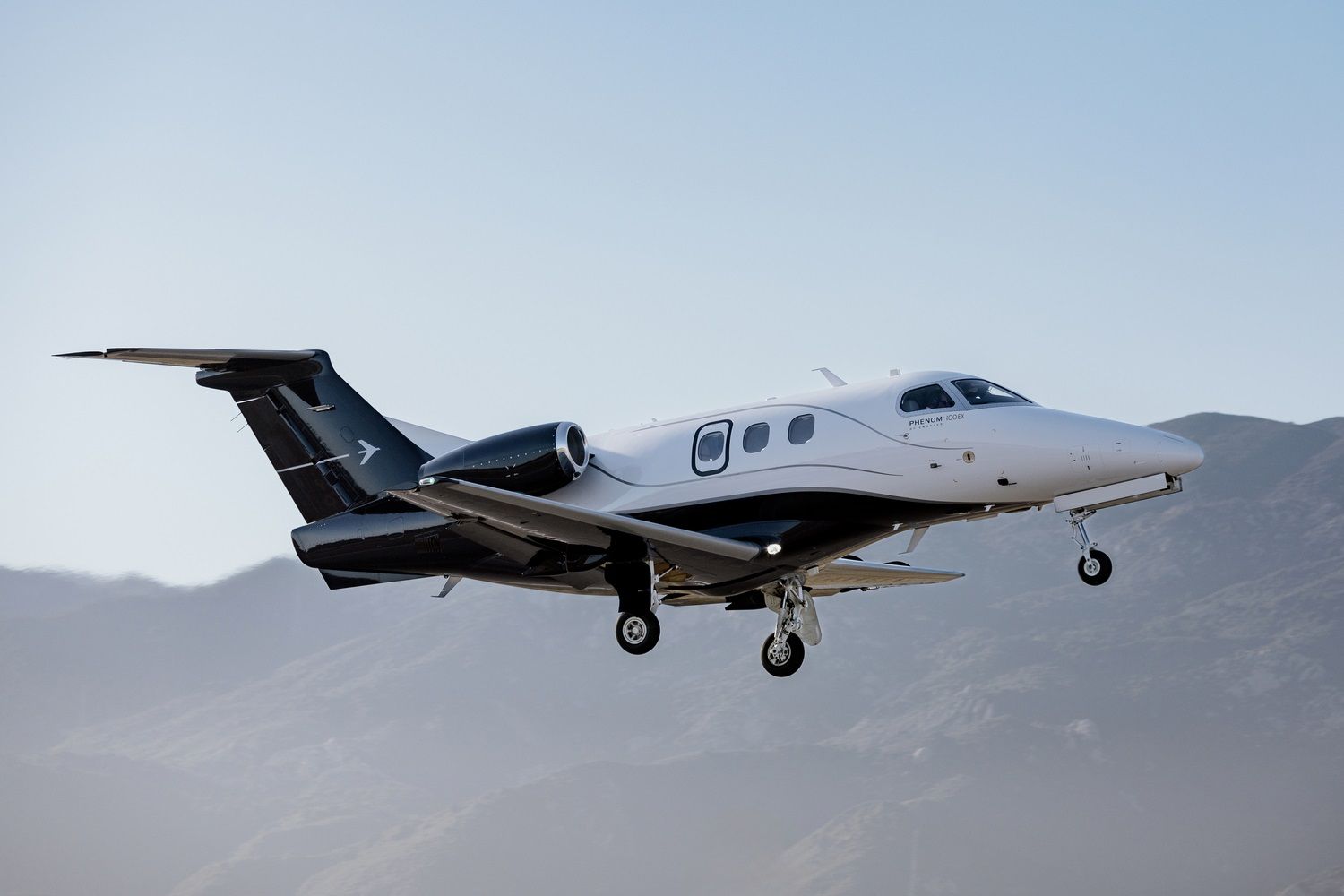
4 Things Embraer Improved On The Phenom 100EX
The newly-introduced jet is already sold out for 2024, thanks to these attractive enhancements
4 HondaJet HA-420
Hourly operating cost: $1,135
- Crew: 1–2 pilots
- Capacity: 4 to 5 passengers
- Length: 42 ft 7 in (12.99 m)
- Wingspan: 39 ft 9 in (12.12 m)
- Height: 14 ft 11 in (4.54 m)
- Max takeoff weight: 10,600 lb (4,808 kg)
- Maximum speed: 422 knots (486 mph, 782 km/h)
The HA-420 HondaJet achieves the fourth position on our list, with an operating cost of $1,135 per hour. It is powered by two General Electric Honda Aero Engines HF-120 turbofan engines, each generating 2,050 lbf (9.1 kN) of takeoff thrust. The engine configuration, called Over-The-Wing Engine Mount (OTWEM), is the most unusual aspect of the aircraft.
Photo: Honda Aircraft Company
HondaJet claims to have found the optimal position for engine placement over the wings (approximately 75% of the chord) to minimize wave drag at high speeds. The airflow over the wings is superimposed with the airflow around the engine, enabling much greater fuel efficiency than many conventional rear-fuselage-mounted configurations.
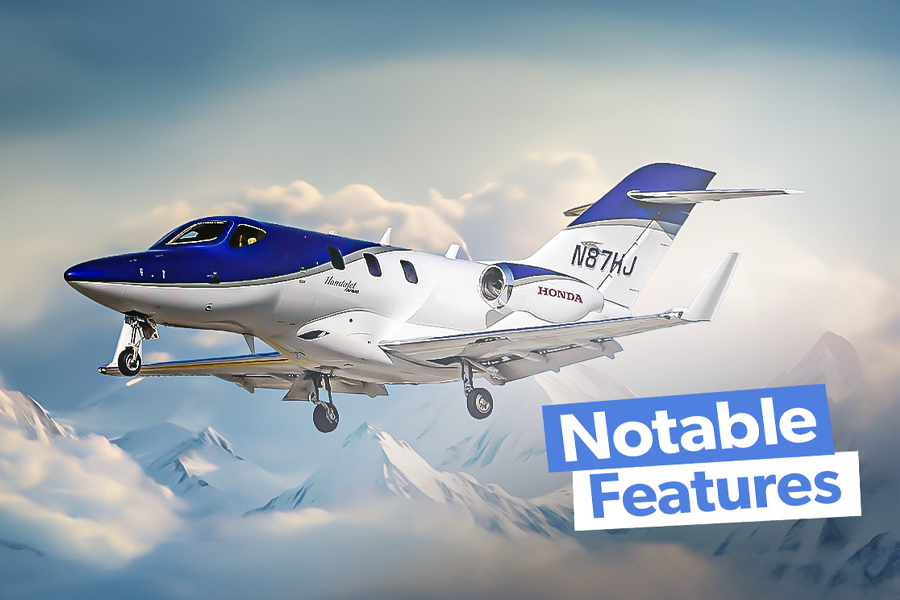
4 Notable Features Of The Honda HA-420 HondaJet
Early concepts of the aircraft date back to the late 1990s.
3 Cessna Citation Mustang
Hourly operating cost: $1,015
- Crew: one or two pilots
- Capacity: 4 to 5 passengers
- Length: 40 ft 7 in (12.37 m)
- Wingspan: 43 ft 2 in (13.16 m)
- Height: 13 ft 5 in (4.09 m)
- Max takeoff weight: 8,645 lb (3,930 kg)
- Cruise speed: 390 mph (630 km/h, 340 knots)
- Maximum speed: 420 knots (483 mph, 777 km/h)
Number three on our list of most economical light jets is the Cessna Citation Mustang, with an hourly operating cost of $1,015. The aircraft is powered by two Pratt & Whitney Canada PW615 turbofan engines, each generating 1,460 lbf (6.5 kN) of takeoff thrust. Despite its aluminum alloy construction, the design of the fuselage and wings minimizes its empty weight and improves operational efficiency.
Photo: Mike Fuchslocher | Shutterstock
The low-wing cantilever monoplane features tapered wings with three spars, enabling reduced weight and greater strength. The manufacturer built and delivered 479 units between 2006 and 2017. The company ceased production due to competition from its own Citation M2 jet.
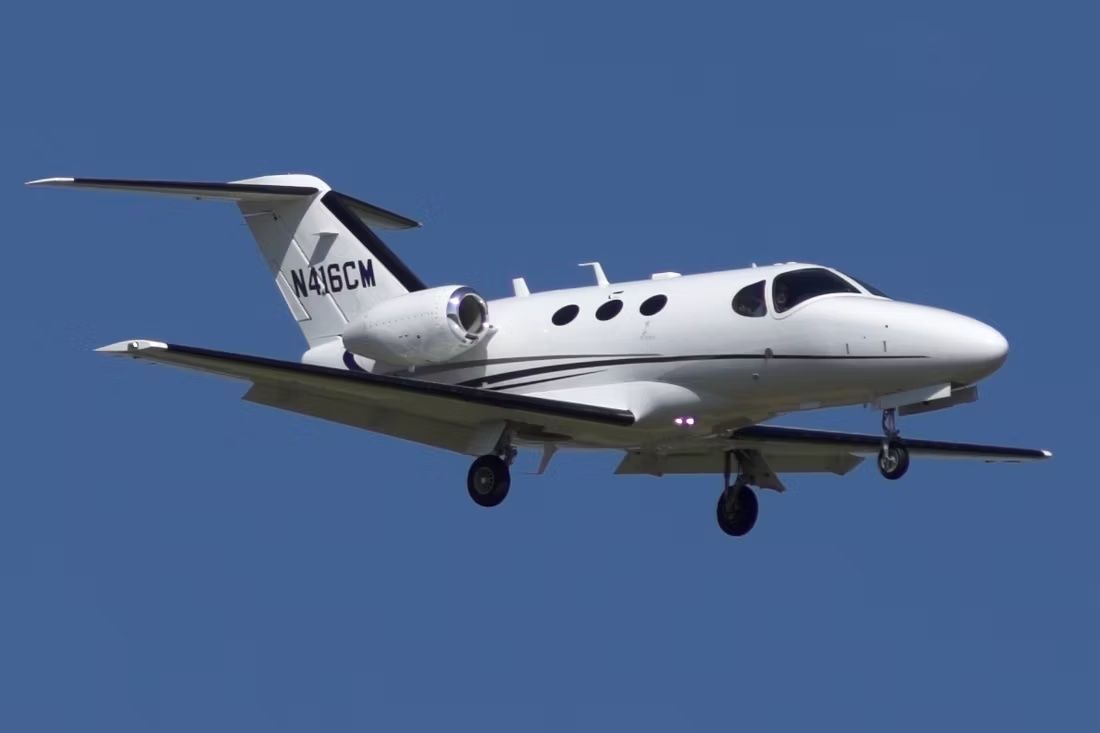
5 Reasons Pilots Love Cessna’s Smallest Jet: The Citation Mustang
The aircraft provides a variety of unique benefits for pilots.
2 Eclipse 550
Hourly operating cost: $889
- Crew: 1–2 pilots
- Capacity: 4–5 passengers
- Length: 33.5 ft (10.2 m)
- Wingspan: 37.9 ft (11.6 m)
- Height: 11.0 ft (3.4 m)
- Max takeoff weight: 6,000 lb (2,722 kg)
- Maximum speed: 375 knots (432 mph, 695 km/h)
- Cruise speed: 370 knots (430 mph, 690 km/h)
The runner-up on our list is Eclipse 550, with an operating cost of $889 per hour. Designed and developed by Eclipse Aerospace of Albuquerque in the early 2000s. Two Pratt & Whitney Canada PW610F turbofan engines power the jet, each generating 900 lbf (4 kN) of takeoff thrust.
The design and aerodynamic performance of the aircraft make it one of the most economical twin jets on the market. According to Eclipse Aerospace,
“The Eclipse 550, the new production twin-engine jet from Eclipse Aerospace, features best in class performance, economics, and safety. With the ability to fly at altitudes up to 41,000 feet at a max cruise of 430 mph, all while consuming a mere 59 gallons of fuel per hour, the Eclipse 550 is the most efficient twin-engine jet on the planet.”
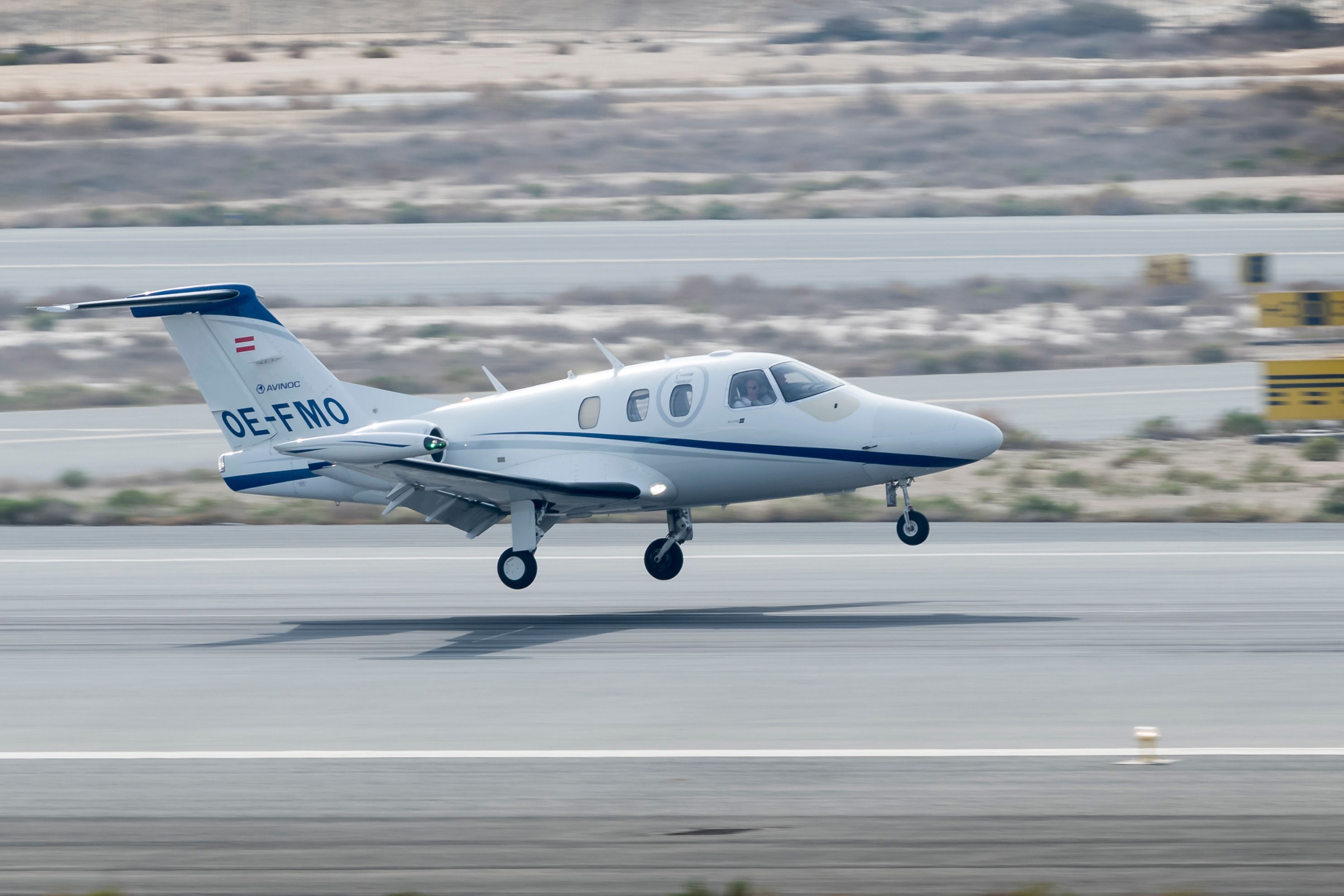
5 Cool Features Of The Eclipse 550: A Very Light Private Jet
The jet features state-of-the-art instruments and systems.
1 Cirrus Vision SF50
Hourly operating cost: $662
- Crew: one
- Capacity: six passengers
- Length: 30 ft 11 in (9.42 m)
- Wingspan: 38 ft 8 in (11.79 m)
- Height: 10 ft 11 in (3.32 m)
- Fuel capacity: 2,000 pounds (910 kg)
- Cruise speed: 305 knots (351 mph, 565 km/h)
- Maximum speed: 311 knots (358 mph, 576 km/h)
Topping our list of the most economical light aircraft is Cirrus VisionJet, with an operating cost of $662 per hour. The aircraft is powered by a single Williams FJ33 turbofan engine, generating 1,845 lbf (8.21 kN) of takeoff thrust.
Photo: Rudzenka | Shutterstock
The low-wing cantilever monoplane boasts optimal performance through its composite design, technology, and attention to detail. According to Cirrus Aircraft,
“With the G2+ Vision Jet, the Williams FJ33-5A engine has been finely tuned with a newly optimized thrust profile that provides up to 20% increased performance during take-off – providing added reassurance in hot temperatures and high elevations and access to additional airports at popular destinations across the globe.”
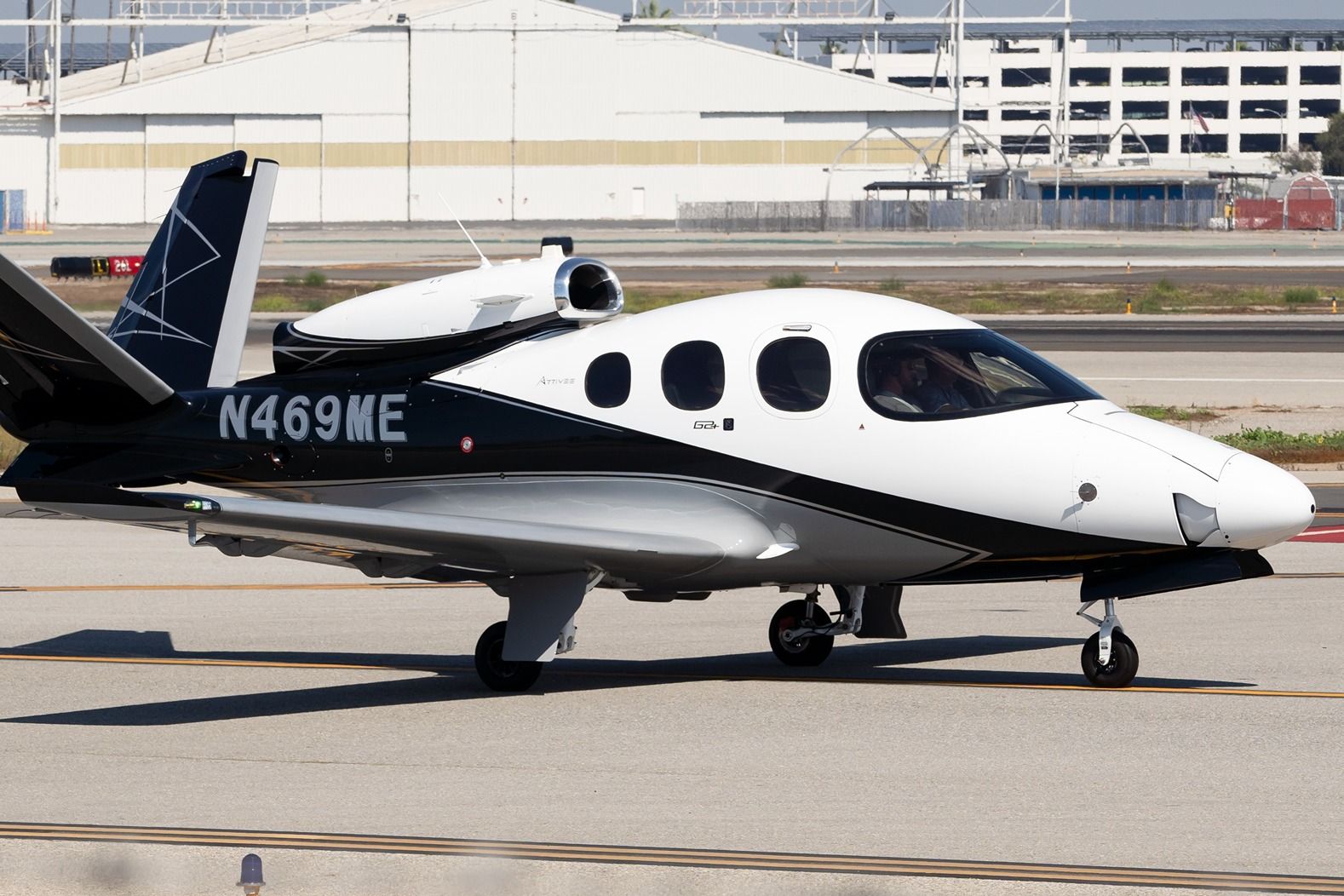
Why The Cirrus SF50 Got Over Its Angle Of Attack Grounding Faster Than The Boeing 737 MAX
Both types suffered from anomalies of their angle of attack readings.
What are your thoughts on the most economical light business jets? Share your views in the comments section.



